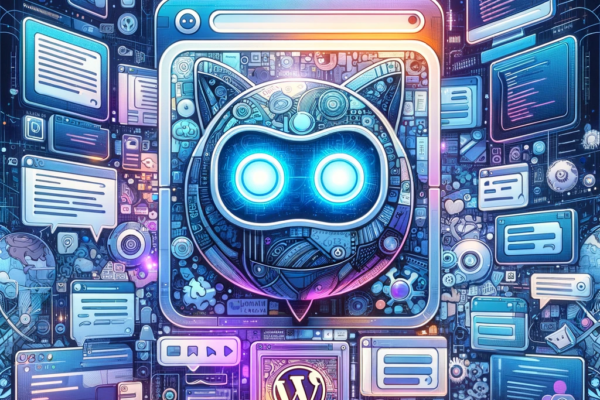Bard and ChatGPT are two of the most popular large language models (LLMs) on the market. Both models are capable of generating text, translating languages, and answering questions in an informative way. However, there are some key differences between the two models.
One of the most significant differences between Bard and ChatGPT is their underlying technology. Bard is based on Google’s LaMDA language model, while ChatGPT is based on OpenAI’s GPT-3 language model. LaMDA is a newer model than GPT-3, and it is trained on a larger dataset of text and code. This means that Bard may be able to generate more creative and informative text than ChatGPT.
Another difference between Bard and ChatGPT is their level of development. Bard is still under development, while ChatGPT is a more mature product. This means that Bard may make more mistakes than ChatGPT, but it also means that Bard has the potential to learn and improve over time.
Finally, Bard and ChatGPT have different target audiences. Bard is designed to be a general-purpose LLM that can be used for a variety of tasks. ChatGPT, on the other hand, is designed to be a more specialized LLM that is optimized for customer service and conversation.
Overall, Bard and ChatGPT are both powerful LLMs that can be used for a variety of tasks. However, Bard may be a better choice for someone who wants to generate creative text or translate languages, while ChatGPT may be a better choice for someone who wants to answer questions or engage in conversation.
Here is a more detailed comparison of the two models:
LaMDA vs. GPT-3
LaMDA and GPT-3 are both large language models, but they are based on different technologies. LaMDA is based on Google’s Transformer neural network architecture, while GPT-3 is based on OpenAI’s Generative Pre-trained Transformer 3 neural network architecture. Transformer neural networks are a type of deep learning model that are particularly well-suited for natural language processing tasks.
LaMDA is a newer language model than GPT-3, and it is trained on a larger dataset of text and code. This means that Bard may be able to generate more creative and informative text than ChatGPT. LaMDA is also trained on a dataset of code, which means that it can generate code as well as text. GPT-3 is not trained on code, so it cannot generate code.
Under Development vs. Mature Product
Bard is still under development, while ChatGPT is a more mature product. This means that Bard may make more mistakes than ChatGPT, but it also means that Bard has the potential to learn and improve over time. ChatGPT is a more mature product, which means that it is more likely to be accurate and reliable. However, Bard has the potential to be more creative and innovative.
Wider Audience vs. Limited Audience
Bard is currently available to anyone with a Google account, while ChatGPT is only available to a limited number of users. This means that more people will be able to use Bard to generate stories, translations, and obtain answers to their questions. ChatGPT is available to a limited number of users, which means that not everyone has access to its features.
Target Audience
Bard is designed to be a general-purpose LLM that can be used for a variety of tasks. ChatGPT, on the other hand, is designed to be a more specialized LLM that is optimized for customer service and conversation. This means that Bard may be a better choice for those looking to create text and other stories, while ChatGPT may be a better choice for anyone who wants to answer questions and engage in conversation.
How To Access Bard and ChatGPT
Bard is a Google AI experiment, and it is currently in beta. This means that it is still under development, and it may make mistakes. However, it is also a powerful tool that can be used for a variety of tasks.
To access Bard, you can go to the Bard website (https://bard.google.com/) and sign up for a free account. Once you have an account, you can start using Bard by typing your question or prompt into the text box and clicking the “Ask Bard” button.
ChatGPT is a language model developed by OpenAI. It is also in beta, and it is available to a limited number of users. To access ChatGPT, you can sign up for a free account on the OpenAI website (https://chat.openai.com/auth/login). Once you have an account, you can start using ChatGPT by typing your question or prompt into the text box and clicking the “Chat” button.
Both Bard and ChatGPT are powerful tools that can be used for a variety of tasks. It is important to remember that they are also still under development, and they may make mistakes.
Here Are Some Tips for Using Bard and ChatGPT
- Be clear and concise in your prompts. The more specific you are, the better Bard and ChatGPT will be able to understand you.
- Use natural language. Bard and ChatGPT are trained on massive datasets of text, so they can understand natural language. However, they may not understand technical jargon or slang.
- Be patient. Bard and ChatGPT are still in development. If you are not satisfied with the results, you can always try rephrasing your question.
Conclusion
Bard and ChatGPT are both powerful LLMs that can be used to assist you in a variety of tasks. Bard may be a better choice for users who want more creativity, while ChatGPT may be a better choice for users who want answers questions to questions.
Whichever model you choose, be sure to use it responsibly. Remember that these programs are still experimental, and they may not always be accurate or dependable. If you have any concerns, be sure to consult with a human expert.
About the Author
Stephen Howell is a multifaceted expert with a wealth of experience in technology, business management, and development. He is the innovative mind behind the cutting-edge AI powered Kognetiks Chatbot for WordPress plugin. Utilizing the robust capabilities of OpenAI's API, this conversational chatbot can dramatically enhance your website's user engagement. Visit Kognetiks Chatbot for WordPress to explore how to elevate your visitors' experience, and stay connected with his latest advancements and offerings in the WordPress community.




